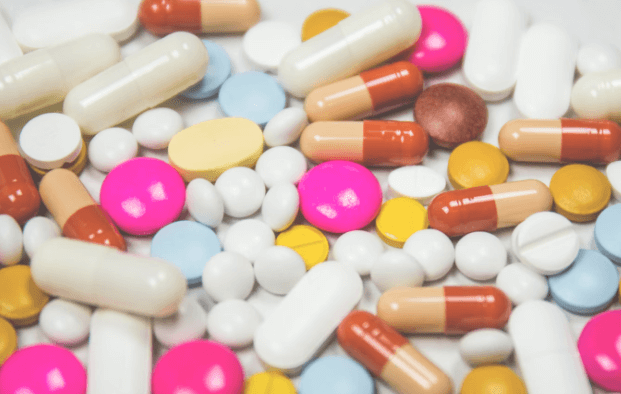What Are the Concerning Side Effects of Suboxone?

While Suboxone has helped countless individuals overcome opioid addiction, its path to recovery comes with its own set of complex side effects.
As a combination drug designed to simultaneously alleviate cravings and curb abuse, Suboxone treads a fine line between treatment and temptation. Its dynamic interplay of withdrawal symptoms is no trivial matter, yet managing them is key to liberation from opioids’ grip.
To gain freedom, one must weather Suboxone’s ups and downs. Within its rewards lie risks – so what dangers lurk in chasing the high of health with this controversial remedy? Let us explain.
What Is Suboxone?
Buprenorphine and naloxone are the two constituents of suboxone, a drug used to treat opioid addiction.
Buprenorphine functions as a partial opioid agonist by activating opioid receptors in the brain. This stimulation lessens the symptoms of withdrawal from other opioids, such as heroin or pharmaceutical drugs, and lessens cravings.
Naloxone is an opioid antagonist that, in the case that the drug is injected or snorted, causes withdrawal symptoms, preventing overuse.
Suboxone dissolves beneath the tongue and is available in sublingual film and tablet versions. This allows for quick absorption into the bloodstream from tissues in the mouth, meaning lower doses are often effective compared to taking medications orally.
A prescription is required to take Suboxone as it is a controlled substance. Effects generally start within 20-45 minutes of sublingual administration.
As a partial agonist, buprenorphine somewhat fulfills opioid cravings, but it does not have the same euphoric effects as full agonists, such as oxycodone. This lower risk of intoxication or overdose makes Suboxone a safer treatment option than methadone for opioid addiction. The addition of naloxone prevents attempting to get high from Suboxone by snorting or injecting it.
Dosing is individualized but usually consists of a daily sublingual tablet or film between 8 and 24 mg. The body can experience effects for a few days before the next dose is required. If you forget to take a dose, take it as soon as you remember, unless it’s almost time for the usual scheduled dose, in which case skip it.
Potential Side Effects of Suboxone
Like all medications, Suboxone carries a risk of side effects for some individuals. The majority of adverse effects are modest and transient, occurring within a few days or weeks. But it’s crucial to let your doctor know about any adverse effects, particularly if they’re severe, persistent, or get worse over time.
Common mild side effects reported in clinical trials include numbness or tingling in the mouth, sweating, headaches, nausea, constipation, and mild withdrawal symptoms. Some people also experience insomnia, pain, mouth irritation, anxiety, fatigue, or mild allergic reactions.
In rare cases, more serious side effects can occur. If you experience severe breathing problems, adrenal problems causing nausea, weight loss, fatigue, or severe dental problems, contact your doctor immediately.
Additionally, seek medical attention promptly if you encounter low blood pressure when standing, issues with coordination or balance, or signs of liver damage. Very severe allergic reactions also require prompt medical attention.
If Suboxone is used for an extended period of time, there is a chance of physical reliance and symptoms of withdrawal. There is also a potential for misuse and addiction in some individuals, especially those with a history of substance abuse disorders.
Suboxone and Dental Injury Lawsuits
Many individuals who have used the sublingual film version of Suboxone have suffered severe dental problems alleged to be caused by the drug’s acidic properties.
Suboxone manufacturers Indivior Inc., Aquestive Therapeutics Inc., and Reckitt Benckiser Pharmaceuticals Inc. have been sued.
The Suboxone tooth decay lawsuit claims that the companies failed to properly warn patients about the dental risks. The risks include tooth decay, damage, and other dental issues associated with long-term Suboxone use.
In late 2023, lawyers began consolidating the numerous individual lawsuits into multidistrict litigation (MDL) to streamline the legal process. A motion was filed in November 2023 to combine all federal cases related to alleged tooth injuries from Suboxone.
Read also The Art of Elegance: Using Decorative Wall Panels to Transform Your Home
According to TruLaw, by December 2023, the defendants agreed to the consolidation of the dental injury lawsuits. An MDL is expected to be established soon and overseen by the U.S. District Court for the Northern District of Ohio. This centralizes the litigation and allows for coordinated discovery and settlement discussions across hundreds of individual cases.
The goal of the MDL process is to efficiently and effectively manage complex litigation with many similar legal claims against the same defendants. It aims to reduce legal costs for both sides while systematically addressing the issues common to all cases.
FAQs
1. Can Suboxone harm your liver?
A: Suboxone poses a danger to liver health, particularly for those with a history of liver illness, high liver enzymes, or hepatitis. Prior to starting Suboxone, it’s crucial to discuss your liver health history with your doctor.
2. Is Suboxone safe for the heart?
A: When used concurrently with benzodiazepines and/or alcohol, Suboxone poses a heightened risk of severe complications compared to its use alone. This heightened risk stems from the fact that all three substances affect the body similarly, including slowing heartbeat and respiration.
3. What is the three-day rule for Suboxone?
A: The three-day rule allows medical professionals to provide Suboxone for a maximum of three days, without renewal or extension, and no more than a day’s supply at a time. The provider must help the patient get referred to a maintenance or detoxification program within these three days.
While Suboxone shows promise in addressing opioid addiction, more research is still needed to understand and mitigate its long-term health risks fully. Patients and manufacturers must continually work together to refine treatment protocols for the greater good.





